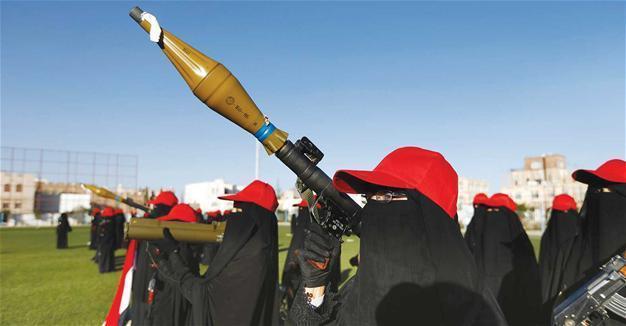Global arms trade highest since Cold War, shows study
STOCKHOLM

The worldwide arms trade has risen to its highest level since the Cold War over the last five years due to demand from the Middle East and Asia, a study said on Feb. 20.
“The transfer of major weapons in 2012-16 reached the highest volume for any five-year period since the end of [the Cold War],” the Stockholm International Peace Research Institute (SIPRI) said in a statement regarding new data on arms transfers that was published on Feb. 20.
“The volume of international transfers of major weapons has grown continuously since 2004 and increased by 8.4 percent between 2007-2011 and 2012-2016,” the statement said.
Arms imports by states in Asia and Oceania increased by 7.7 percent between 2007-2011 and 2012-2016 and accounted for 43 percent of global imports in the 2012-2016 period, the report said.
India was the world’s largest importer of major arms in the period, accounting for 13 percent of the global total. Between 2007-2011 and 2012-2016, it increased its arms imports by 43 percent, the report said. In the 2012-2016 period, India’s imports were far greater than those of its regional rivals China and Pakistan.
In Southeast Asia, Vietnam made a particularly large jump from being the 29th largest importer in the 2007-2011 period to the 10th largest in the 2012-2016 period, with arms imports increasing by 202 percent, SIPRI said.
“With no regional arms control instruments in place, states in Asia continue to expand their arsenals,” said Siemon Wezeman, a senior researcher with the SIPRI Arms and Military Expenditure Programme.
When it came to the Middle East, arms imports by states in the region rose by 86 percent between 2007-2011 and 2012-2016, accounting for 29 percent of global imports in the latter period.
Saudi Arabia was the second largest importer of weapons in the world (up 212 percent), behind India, which unlike China, does not have a production at national level yet.
Arms imports by Qatar rose by 245 percent, while the majority of other states in the region also increased arms imports, although at lower rates.
“Over the past five years, most states in the Middle East have turned primarily to the USA and Europe in their accelerated pursuit of advanced military capabilities,” said Pieter Wezeman, a senior researcher with the SIPRI Arms and Military Expenditure Programme.
“Despite low oil prices, countries in the region continued to order more weapons in 2016, perceiving them as crucial tools for dealing with conflicts and regional tensions,” he added.
The United States remains the top weapons exporter with a 33 percent market share (up 3 points), ahead of Russia (23 percent, down 1 point), China (6.2 percent, up 2.4 points) and France (6.0 percent, down 0.9 points), which passed Germany (5.6 percent, down 3.8 points).
The five countries account for almost 75 percent of global exports of heavy weapons.
“The USA supplies major arms to at least 100 countries around the world – significantly more than any other supplier state,” said Dr. Aude Fleurant, director of the SIPRI Arms and Military Expenditure Programme. “Both advanced strike aircraft with cruise missiles and other precision-guided munitions and the latest-generation air and missile defense systems account for a significant share of U.S. arms exports.”
Russia accounted for a 23 percent share of global exports in the period 2012-2016. Seventy percent of its arms exports went to four countries: India, Vietnam, China and Algeria.
France’s boost in the export ranking is a result of important contracts signed with Egypt, which acquired Mistral-style warships and Rafale combat aircraft.
Fleurant told Agence France-Presse that “competition is fierce among European producers” with France, Germany and Britain in the lead.
The SIPRI Arms Transfers Database contains information on all international transfers of major weapons (including sales, gifts and production licenses) to states, international organizations and armed non-state groups from 1950 to the most recent full calendar year, 2016, the institute says. It adds that SIPRI data reflects the volume of deliveries of arms, not the financial value of the deals.
 The worldwide arms trade has risen to its highest level since the Cold War over the last five years due to demand from the Middle East and Asia, a study said on Feb. 20.
The worldwide arms trade has risen to its highest level since the Cold War over the last five years due to demand from the Middle East and Asia, a study said on Feb. 20.